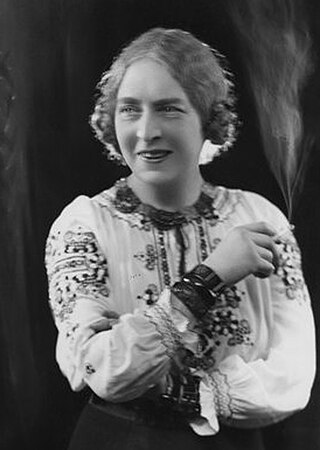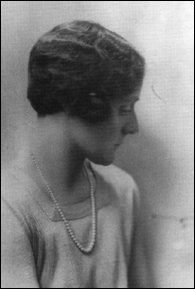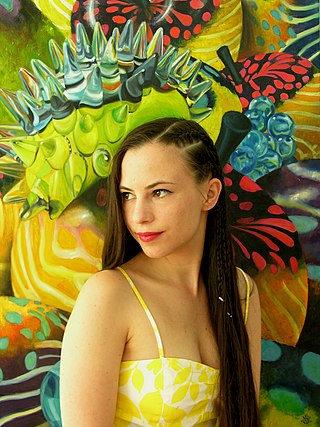Related Research Articles

Sophia Theresa "Sophie" Pemberton was a Canadian painter who was British Columbia's first professional woman artist. Despite the social limitations placed on female artists at the time, she made a noteworthy contribution to Canadian art and, in 1899, was the first woman to win the Prix Julian from the Académie Julian for portraiture. Pemberton also was the first artist from British Columbia to receive international acclaim when her work was exhibited at the Royal Academy in London (1897).

Dame Elizabeth Violet Blackadder, Mrs Houston, was a Scottish painter and printmaker. She was the first woman to be elected to both the Royal Scottish Academy and the Royal Academy.

Louise Ingram Rayner was a British watercolour artist.

Dame Laura Knight was an English artist who worked in oils, watercolours, etching, engraving and drypoint. Knight was a painter in the figurative, realist tradition, who embraced English Impressionism. In her long career, Knight was among the most successful and popular painters in Britain. Her success in the male-dominated British art establishment paved the way for greater status and recognition for women artists.
Chantal Joffe is an American-born English artist based in London. Her often large-scale paintings generally depict women and children. In 2006, she received the prestigious Charles Wollaston Award from the Royal Academy.

Dame Ethel Walker was a Scottish painter of portraits, flower-pieces, sea-pieces and decorative compositions. From 1936, Walker was a member of The London Group. Her work displays the influence of Impressionism, Puvis de Chavannes, Gauguin and Asian art. Walker achieved considerable success throughout her career, becoming the first female member elected to the New English Art Club in 1900. Walker's works were exhibited widely during her lifetime, at the Royal Academy, the Royal Society of Arts and at the Lefevre Gallery. She represented Britain at the Venice Biennale four times, in 1922, 1924, 1928 and 1930. Although Walker proclaimed that 'there is no such thing as a woman artist. There are only two kinds of artist — bad and good', she was elected Honorary President of the Women's International Art Club in 1932. Soon after her death, she was the subject of a major retrospective at the Tate in 1951 alongside Gwen John and Frances Hodgkins. Walker is now acknowledged as a lesbian artist, a fact which critics have noted is boldly apparent in her preference for women sitters and female nudes. It has been suggested that Walker was one of the earliest lesbian artists to explore her sexuality openly in her works. While Walker was contemporarily regarded as one of the foremost British women artists, her influence diminished after her death, perhaps due in part to her celebration of female sexuality. Made a Dame Commander of the Order of the British Empire in 1943, Walker was one of only four women artists to receive the honour as of 2010.
Lisa Milroy is an Anglo-Canadian artist known for her still life paintings of everyday objects. In the 1980s, Milroy’s paintings featured ordinary objects depicted against an off-white background. Subsequently her imagery expanded, which led to a number of different series including landscapes, buildings and portraits. As her approaches to still life diversified, so did her manner of painting, giving rise to a range of stylistic innovations. Throughout her practice, Milroy has been fascinated by the relation between stillness and movement, and the nature of making and looking at painting.

Edward Brian Seago, RBA, ARWS, RWS was an English artist who painted in both oils and watercolours.

George Frederick Arthur Belcher was an English cartoonist, etcher and painter of genre, sporting subjects and still life.

Gladys Maccabe, MBE HRUAFRSA MA(Hons)ROI was a Northern Irish artist, journalist and founder of The Ulster Society of Women Artists.
Jean Esme Oregon Cooke RA was an English painter of still lifes, landscapes, portraits and figures. She was a lecturer at the Royal Academy and regularly exhibited her works, including the summer Royal Academy exhibitions. She was commissioned to make portraits by Lincoln College and St Hilda's College, Oxford. Her works are in the National Gallery, Tate and the Royal Academy collections. In the early years of her marriage, she signed her works Jean Bratby.

Kathleen "Kay" Moir Morris was a Canadian painter and member of the Beaver Hall Group.
Alethea Garstin (1894–1978) was a Cornish artist and illustrator who exhibited paintings regularly at London's Royal Academy from an early age.
Alicia Louisa Letitia BoyleRBA, RHA, RUA was an Irish abstract marine and landscape artist.
Edith Jagger (1880-1977) was a British artist and textile designer. She specialized in textile design and was Chief Designer at Painted Fabrics Limited in Sheffield for fourteen years. Her oil paintings of still lifes and flower subjects were exhibited internationally throughout the 1930s.

Amanda Ansell is an English artist. She studied Fine Art at Norwich University of the Arts between 1995 and 1998 and then at the Slade School of Fine Art, University College London from 1998 to 2000. After living in London for seven years, she returned to her native Suffolk in 2006 to begin an artist residency at Firstsite, Colchester. The same year, a body of work was selected for exhibition at Kettles Yard, Cambridge and she was nominated for Jerwood Contemporary Painters.
Jean Osborne was an artist from Northern Ireland who worked primarily in oils and watercolours.
Cherith McKinstry was an Irish painter and sculptor.

Naomi Devil, originally Noémi Anna Ördög, is a Hungarian painter and graphic designer.

Ann Finlayson was an English painter, draughtsperson and teacher. She worked as an assistant to Bridget Riley and Peter Sedgley from 1969 to 1971. She was best known for her abstract watercolours.
References
- ↑ "Gilly Szego (b.1932) | Art UK". artuk.org. Retrieved 8 October 2017.
- ↑ "Gillian Bender". Geni.
- 1 2 Roscow, Calum (2017). Gilly Szego: A Retrospective. British Library, London: CJS Roscow Publishing. pp. 5–49. ISBN 978-1527218024.
- ↑ "They Were Married - The Tatler's Review". The Tatler and Bystander: 436. 21 November 1951 – via British Newspaper Archive.
- 1 2 3 "There are paintings at the bottom of the garden". The Guardian. 1 March 1974.
- ↑ Royal Academy of Arts (London) (1968). The Royal Academy Summer Exhibition 1968. Harvard University: William Clowes & Sons, London. p. 69.
- ↑ Royal Academy of Arts (London) (1969). The Royal Academy Summer Exhibition 1969. Royal Academy of Art, London: William Clowes & Sons, London.
- ↑ "Congress House". Arts Review. XXII (14). 18 July 1979.
- ↑ "Charlotte's a Face in the Crowd". The Guardian. 15 February 1974.
- ↑ Prime, Hilda (1980). Poems by Primo: Norfolk Life In Verse. Gillian Szego. British Library: Smee Summer Gallery. pp. 1–36. ISBN 0950736309.
- ↑ Szego, Gilly (1982). Man Woman. Kevin Reeves, Allan Seago. David J Ellis. pp. 1–20.
- ↑ "Bury St Edmunds artist to launch a new exhibition in the town". www.buryfreepress.co.uk. Retrieved 8 October 2017.
- ↑ "Lifelong Activist & Artist Gilly Szego Holds Retrospective at Protein Studios – After Nyne Magazine". After Nyne Magazine. 13 November 2017. Retrieved 13 November 2017.
- ↑ Derrick, Paul. "Tribute to Bury St Edmunds artist and jewellery designer Gilly Szego following death aged 90". Suffolk News. No. 31 March 2023. Iliffe Publishing. Retrieved 31 March 2023.